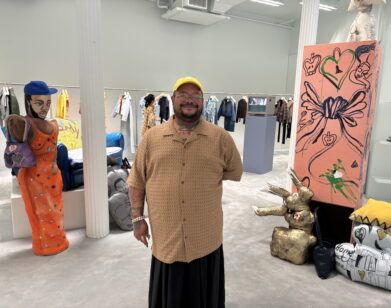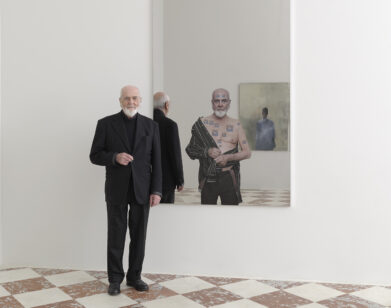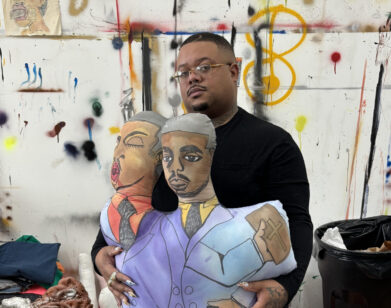ART!
Raúl de Nieves Tells Ryan McNamera About the University of Desire

With recurring themes revolving around rituals and rebirth, Raúl de Nieves makes art with a mystical touch. Though he’s best known for creating glittering sculptures and plastic “stained glass” murals, the New York-based artist is a performer at heart. Born in Mexico and raised in San Diego, the multidisciplinary creative learned from a young age how to capture the attention of his audiences—whether it be The Smashing Pumpkins, who he dove in front of as a teenager in a fit of fandom, or Brooklyn club-goers enamored by the sonic stylings of his experimental band, Haribo. Yet de Nieves’s punk edge is softened by a gentle demeanor that shines through in both his fantastical sculptures and dedication to community building and queer nightlife. In fact, it’s this dichotomy that makes the 38-year-old artist’s work so magnetic. Here, on the occasion of Carnage Composition, now on view at Company Gallery, de Nieves spoke to his friend, the performance artist Ryan McNamara, about childhood obsessions, spiritual connections, and magical joy.
———
RYAN MCNAMARA: So I did the calculations, we met 13 years ago. Isn’t that crazy?
RAÚL DE NIEVES: It’s crazy.
MCNAMARA: But the other night, when you were telling me about your Smashing Pumpkins fan club, I was like, “We all had these lives before we moved here that we don’t know about.” I love artists’ first obsessions. What else were you into?
DE NIEVES: When I moved to the United States, The Smashing Pumpkins were like gods in my mind. I was so enamored by the way that their concerts brought all these freaks together, how they introduced me to other subcultures of music and art, and how we created these spaces for one another and celebrated stardom—The Smashing Pumpkins and their infinite sadness.
MCNAMARA: A lot of people, when they find that community, are like, “Oh good. These people feel more like my family than my actual family.” But not in your case, because you are also obsessed with your mom. You weren’t running away from something, or were you?
DE NIEVES: Not necessarily running away, because my mom was the person who got me the album and would drive me to the shows. When I was really young, we lived in San Diego and the first time I went to see The Smashing Pumpkins they had a Tower Record signing. I wore the full look, the Siamese Dream wings. I caused a scene, I threw myself on the table in front of Billy Corgan, I was crying. And then I ended up on the front page of the newspaper. My mom was like, “Who are you? What’s going on? Who are these people?”

All photos courtesy of Company Gallery.
MCNAMARA: It’s crazy to think about your mom going from, “Why is my child throwing themselves on the table in front of these rock stars?” to “Here’s my child in the Whitney Biennial.” What has it been like for her to see that journey?
DE NIEVES: Well, I moved away from home really young. I went to San Francisco when I was 20, I wanted to go to school and start my own life and live independently. My mom has seen so many variations of my work, but with this exhibition, Carnage Composition, she was like, “I feel like this is the most you [art] I’ve ever seen.” I think she was moved by the duality of the screens in the exhibition, the starkness, and then the coloring book-type drawings on the back.
MCNAMARA: Totally. It’s been interesting for me because I knew you from going out, and from being in Ryan Trecartin’s movies. I knew you had an amazing personality, but the first time I saw your work I was like, “Wait, this is wildly personal.”
DE NIEVES: Well, for a while, I’ve been making work based around my family, the passing of my father, the passing of my grandfather, moving to the Americas, these experiences that were rooted in an attachment to the past. I was trying to celebrate these tragic experiences by creating these spectacles. I just had this show at the ICA Boston that was called The Treasure House of Memories where there’s a suite of mares that are based around three experiences that happened in my life. And for some reason, through this exhibition, I felt like I was really able to free myself from these past experiences and begin a new journey.
MCNAMARA: Right.
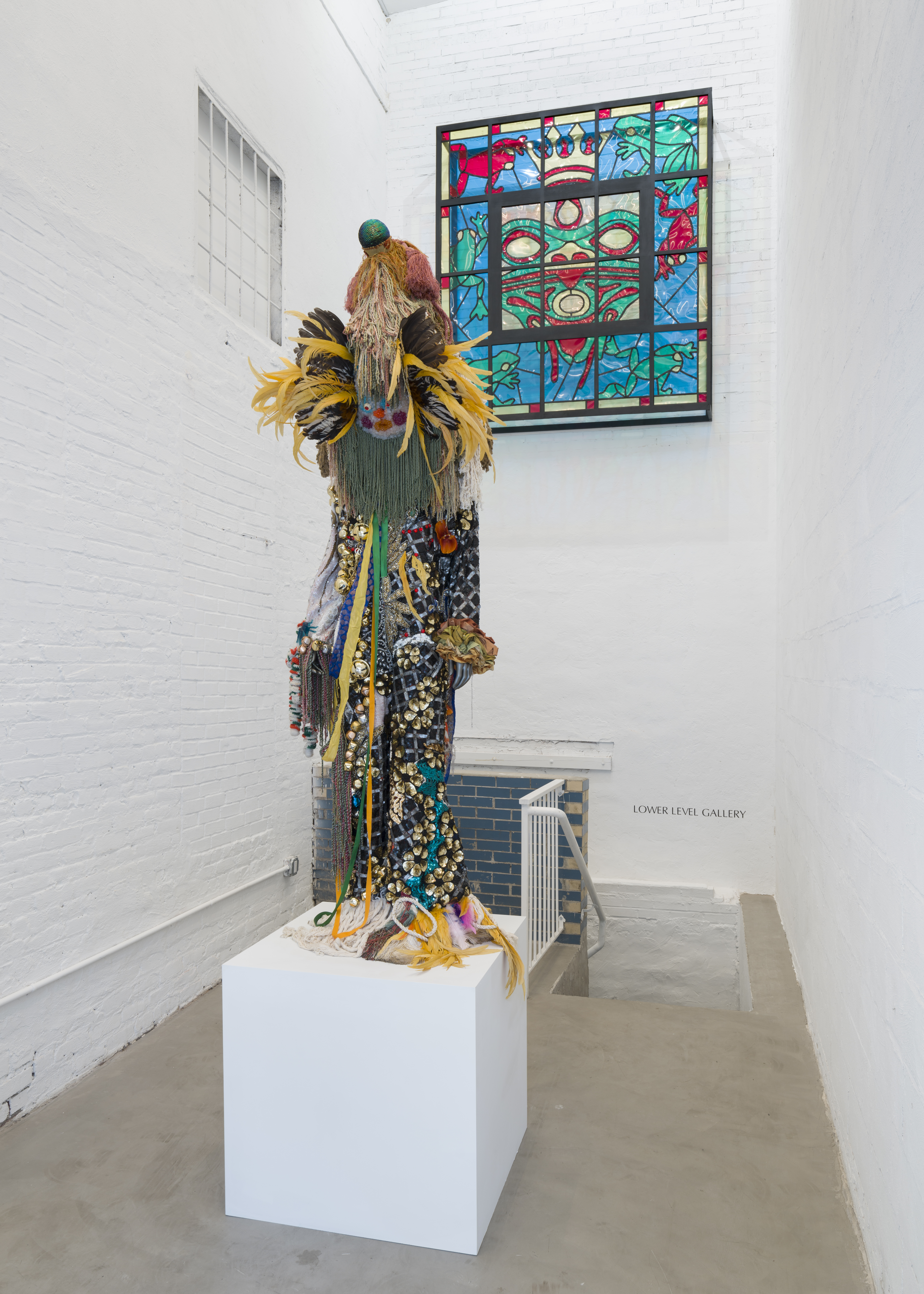
DE NIEVES: I think having my mom around has made me realize that I hadn’t been able to sit down as an adult and be like, “What actually happened during that time?” When you’re thinking about the past, you’re filling in gaps with new experiences of personal growth, so things are slightly changing. You’re building new narratives and inventing scenarios that didn’t actually happen, so the memories are all foggy. I was living in this cloudy world full of magic, but I hadn’t really seen the full light.
MCNAMARA: It’s so interesting because at the opening, you’ve got friends from nightlife, it’s this big, beautiful celebration and there’s this energy which is very present in the work too. But then there is this really thoughtful, introspective part to it. You have a metaphysical side, where you’re thinking about your spirit in the world, and then you have a hedonistic side, like, “Let’s go party and have fun.”
DE NIEVES: Yeah. I feel like through the act of exhibition, or the unfolding of our personal visions, we create these sacred spaces. We’ve been a part of these communities that have built platforms for us to really live who we want to be and to really celebrate not just ourselves, but the people around us. That enabled this idea of labor as a form of love. A lot of my work has this repetitive quality, but it’s also about being presently grounded. I think that’s something I’ve been able to unfold a little bit more as these experiences come about.
MCNAMARA: You’ve also collaborated with lots of your friends. How is that different from your more solitary, methodical work?
DE NIEVES: Well, even going back to my obsession with The Pumpkins or the scene, the collective mind is at the forefront of my practice, and it’s derivative of the people around me. Being able to become a character in their own personal visions has been my scholarly way of learning how to do things.
MCNAMARA: Oh, that’s amazing.
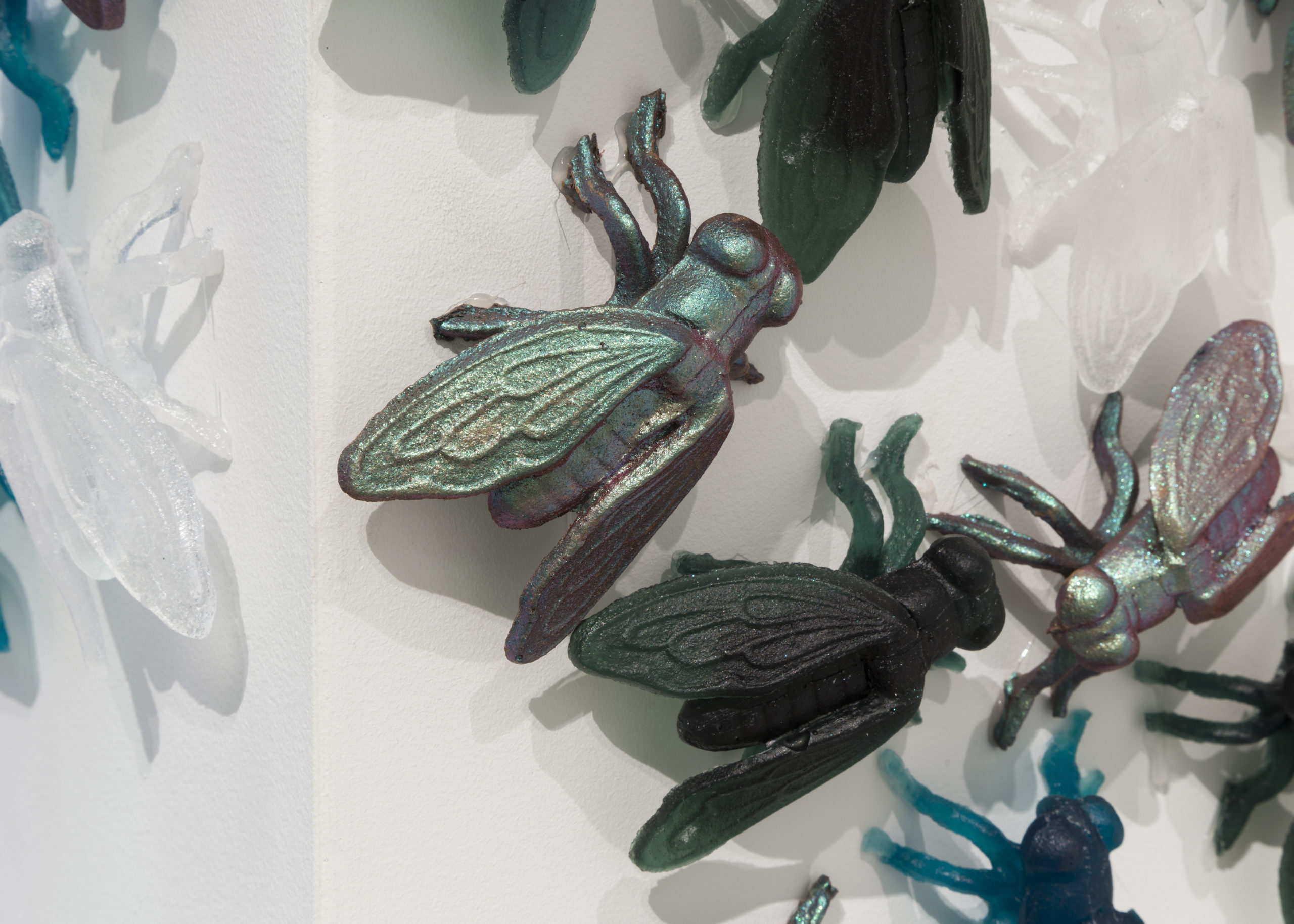
DE NIEVES: When I lived in San Francisco, and decided not to go to art school, and became friends with the people that went to art school, I learned from their experiences. I’m still doing that just by sharing a studio with Kate Hardy and having Ambara upstairs and talking to them about what we’re doing on a deeper level. It’s almost a form of therapy. We have these very close-knit connections where, even when you’re not collaborating, there’s still a working force behind your practice. I was walking in Seattle yesterday with my friend and we were talking about Akeem [Smith] and Telfar and being like, “Oh my gosh, these people were riding bikes and playing clubs and now they have their own enterprises.” It’s just so incredible to see the uplifting of one another, it’s like we have created our own university of desire.
MCNAMARA: That’s a beautiful way of saying it. I was just thinking, “Damn, Raul is proof that New York can work.” You came here, you have a strong point of view, and New York’s like, “Okay. Let’s give you the opportunities.” Not that it was overnight—
DE NIEVES: No.
MCNAMARA: You had friends who took off very young. And you’re still very young, but it took a little bit longer for you. I’m wondering if you could talk about that perseverance. Was there ever a point where you were just like, “Okay, I don’t know if this is going to happen?”
DE NIEVES: I was thinking about the Whitney Biennial, how that became such great exposure for me, but also a challenge for not just for myself, but for the viewer, and for the maker—to be able to create this skyscraper mural out of paper and tape and beads, to have this dual vision of stained glass and architecture and storytelling. I feel like the vulnerability of that just really pushed this idea of ambition, like the fool—he always has this little bag of tricks and they’re a companion for whatever you want to say, whether it’s a dog or just the idea of the angels. We’re always doing it with the help of others. Yesterday I woke up and my Supreme collaboration dropped.
MCNAMARA: Listen, it’s not the most insane thing that you’ve done, but I was just like, “Whoa, Raul has a fucking Supreme drop.”
DE NIEVES: I know. My friend Emily Gruca, she has worked with every single designer and now she’s head of the design team at Supreme, and she’s always believed in my practice. People are going crazy and I’m like, “Oh my God, I can’t believe I did this.” It’s not about dreaming so much anymore, it’s about waking up and making it happen.
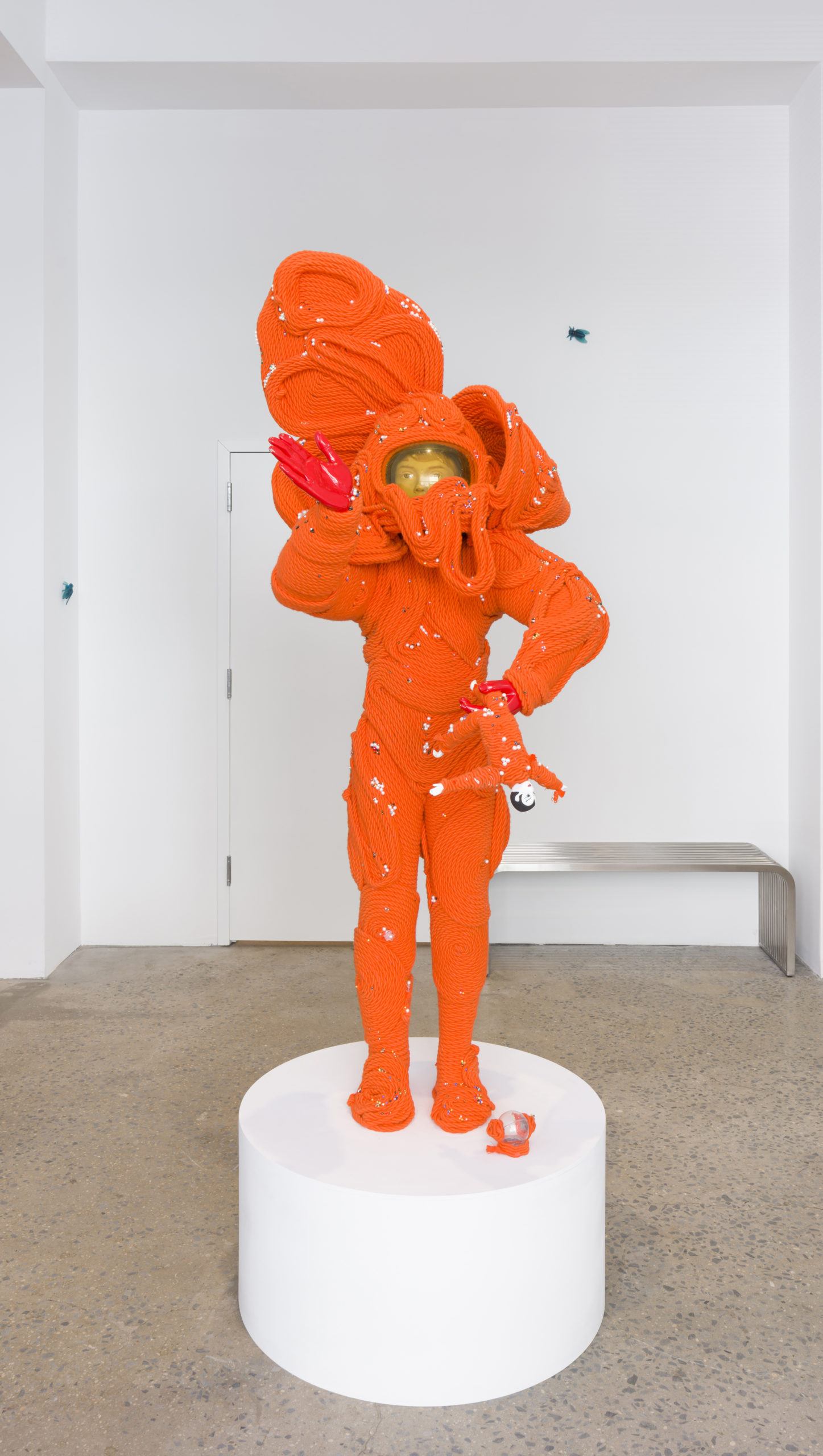
MCNAMARA: Yeah. I need to talk to you about your legendary work ethic because everyone talks about it. We’re like, “This girl can go out till 5:00 AM and then be at the studio at 10:00 AM.” I know it’s normal to you, because it’s who you are, but you know that’s very special. Right?
DE NIEVES: Yeah. I feel like there’s moments in our lives where we’re like, “What would it be like if I couldn’t wake up or do the things that I do?” I choose my vices and my ways of doing things, but it’s almost like conquering this experience of getting up to the top of the mountain, the longer you wait, the harder it becomes. I obviously have a lot of resting points, and people often see me in a different light and they’re like, “Whoa, Raul, you’re so chill.” I’m like, “I’m the silliest person you know.” Last night, I was out with my friend, went to bed at like 4:00. Here it’s 9:00 AM.
MCNAMARA: And here you are. It almost seems like you came out of the womb as a fully formed person, because you were the kid who’s like, “I’m going to splay myself out on the table in front of rock stars.” And when you perform, you are fully embodied. You’re like, “I might be at The Boom Boom Room, but I’m going to give you a fucking punk show.” Do you know where that came from?
DE NIEVES: Well, just thinking back to where we started talking about past experiences and living through personal traumas, I definitely went through a moment as a child. I’m allergic to penicillin and they gave it to me and half my body turned black. They thought I was going to be amputated from the legs down. My mom’s like, “You almost died.” In my exhibition there’s this painting of St. George and the dragon. It was one of the first paintings I ever made and I wanted to include it in the show as a form of the cycles that we go through. I think we all have to find our moments where we are our own personal heroes. I look up to myself and I’m so happy that I can say that because it has taken a long time to be like, “I am the person I want to be.”
MCNAMARA: Yeah. It’s super simple and also wildly profound. All right. My last question. I want to know about a moment when you were like, “How the hell is this my life?”
DE NIEVES: When I was making the carousel with Bulgari I was like, “How am I a part of this world and how are these people believing in me?” It also brought out this inner magical joy, this idea of being a child. It’s called When I Look into Your Eyes I See the Sun, because it’s this blinding force of energy. At that moment I was like, “Oh my gosh, I’ve really crossed a portal to a new world where everyone’s invited.” And I think it really, really made me think that anything is possible. Since then, I’ve been celebrating who I am as a person, like, “We all deserve this and this is our time so let’s fucking run with it and have fun.”




